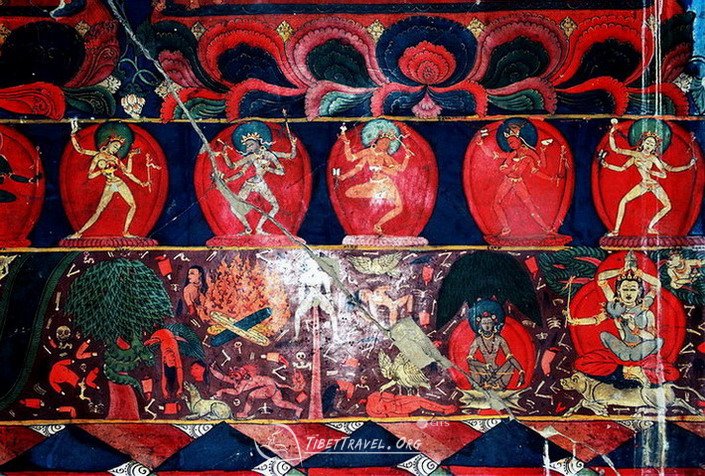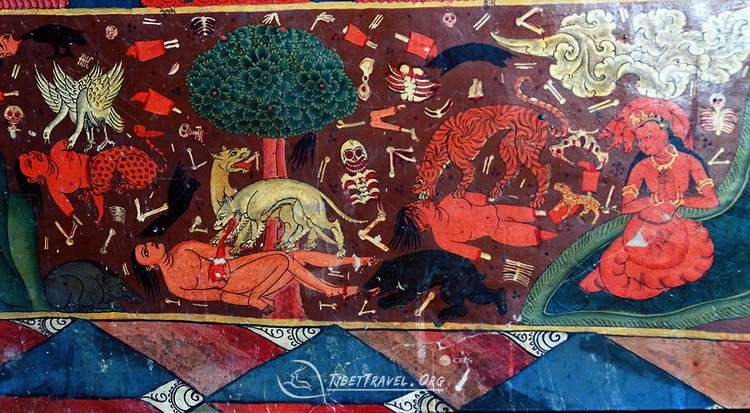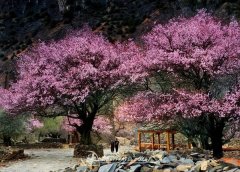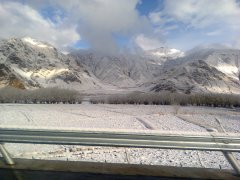Centered in present-day Zanda County, Guge was an ancient kingdom in Ngari Prefecture, Western Tibet. At various points in history after 10th century AD, the kingdom held sway over a vast area including south-eastern Zanskar, Upper Kinnaur, and Spiti valley either by conquest or as tributaries. The ruins of the former capital of Guge kingdom are located at Tsaparang in the Sutlej valley, not far from Mount Kailash and 1,200 miles (1,900 km) westwards from Lhasa.
Mural at Guge Kingdom
There are a total of 1,416 surviving pieces of architecture, including 879 caves, 445 houses, 60 blockhouses, 28 pagodas, and four tunnels, which lead in all directions inside the architectural group. At the outer ring there are walls made of loess, which are decorated with many figures of Buddha, scriptures and incantations in Tibetan, and Sanskrit engraved on large cobbles. The houses within the ruins have wooden structures and level roofs.
The larger works of architecture include the Red Temple, the White Temple, the king's palace and the meeting hall. The White Temple and the Red Temple are about the same size, covering about 300 square meters. Within the temple there are 36 square pillars. The pillars and the ceiling are covered with colored drawings of patterns and figures of Buddha, and all the walls are covered with frescoes of different subjects. The White Temple boasts a precious mural painting of successive kings of Tubo and the genealogy of the Guge king. Even with the passing of several hundred years, the frescos remain bright and lustrous. Having been neglected for years, both the Red Temple and White Temple are dilapidated.
Mural at Guge Kingdom
The only path from the base of the hill to the palace halls on the hilltop is a man-made tunnel. The upper part of the Guge Castle holds the Winter Hall and Summer Hall, where the royal family lived. They are empty now. Only the frescos and wooden engravings in Tancheng Hall are well preserved. Guge's colored paintings, frescos and sculptures are rich works of a high artistic level and immense research value.
Guge seems to be an encyclopedia, with a long history, deeply-rooted culture, mystic legends and many unfathomable enigmas. The ruins of the Guge Kingdom, standing on the desolate land, silently relate the history and give forth the light of art.
Recommended Tour to Guge Kingdom:
Mt. Kalaish and Guge Kingdom Tour











.jpg)




0 Comment ON "Tibetan Cultural Heritage of Guge Kingdom"